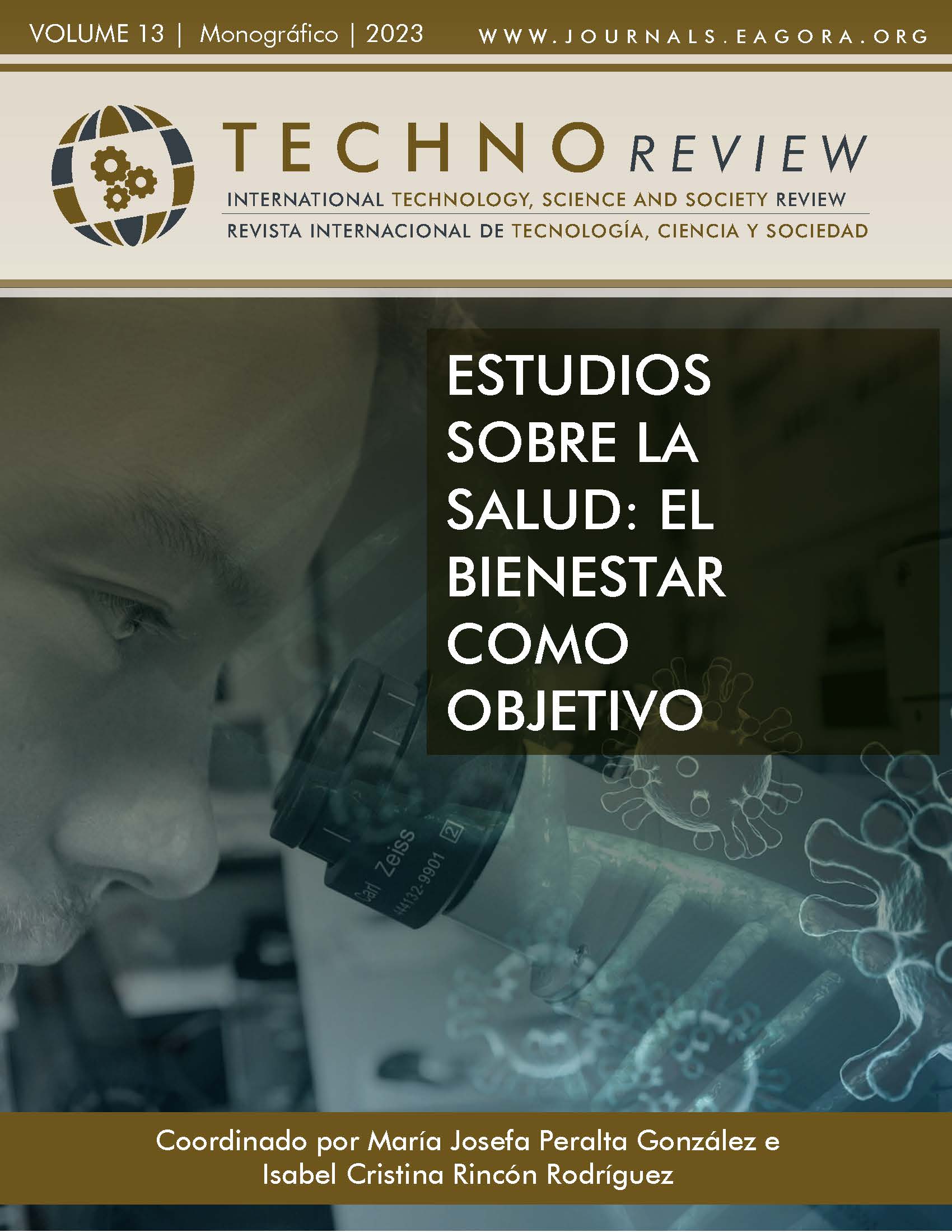The Pharmacy in the New Era of Artificial Intelligence
Pharmacy and Artificial Intelligence
DOI:
https://doi.org/10.37467/revtechno.v13.4804Keywords:
Artificial intelligence, Pharmacy, Health, Chatbots, Pharmacological therapy, Pharmacy inventory, Disease detectionAbstract
Artificial intelligence has become a key piece of human knowledge and due to its importance, it has been a fundamental tool for various areas. One of the applications of AI can be seen in the health domain, particularly in pharmacy, various efforts have been made to solve tasks in an automated way in the pharmaceutical area, which range from the distribution of drugs, the interaction from chatbots with patients and follow-up medical control, to support to find a diagnosis. This article describes relevant research in the area, providing an overview of the importance of AI in pharmacy.
References
Ahmad, N. S., Sanusi, M. H., Abd Wahab, M. H., Mustapha, A., Sayadi, Z. A., & Saringat, M. Z. (2018, November). Conversational bot for pharmacy: A natural language approach. In 2018 IEEE Conference on Open Systems (ICOS) (pp. 76-79). IEEE.
Álvarez-Carmona, M. Á., Favela J., Morales E. F., Sucar E. (2020). La Alianza de Inteligencia Artificial de CONACYT, impulsa redes de investigación para enfrentar el COVID-19. Kompuer Sapiens, 3(12), 19-25.
Álvarez-Carmona, M. Á., Aranda, R., & Rodríguez-González, A. Y. (2021). Overview of Rest-Mex at IberLEF 2021: Recommendation System for Text Mexican Tourism. Sociedad Española para el Procesamiento del Lenguagje Natural, 67(2), 163-172.
Amerini, I., Anagnostopoulos, A., Maiano, L., & Celsi, L. R. (2021). Deep Learning for Multimedia Forensics. Foundations and Trends® in Computer Graphics and Vision. Now Publishers.
Campos, K. R., Coleman, P. J., & Parmee, E. R. (2019). The importance of synthetic chemistry in the pharmaceutical industry. Science, 363(6424). http://10.1126/science.aat0805
Cifuentes, R. M. (2011). Diseño de proyectos de investigación cualitativa. En: R.M. Cifuentes Gil (Coord.). Diseño de proyectos de investigación cualitativa (pp. 23–42). Noveduc.
Corea, J. C., Camejo, J. D., Espinoza, O. F., & Gutiérrez, H. L. (2018). Política de inventarios máximos y mínimos en cadenas de suministro multinivel. Caso de estudio: una empresa de distribución farmacéutica. Nexo Revista Científica, 31(2), 144-156. http://10.5377/nexo.v31i2.6837
Dey, S., Luo, H., Fokoue, A., Hu, J., & Zhang, P. (2018). Predicting adverse drug reactions through interpretable deep learning framework. BMC bioinformatics, 19(21), 1-13. https://doi.org/10.1186/s12859-018-2544-0
Donepudi, P. K. (2018). AI and Machine Learning in Retail Pharmacy: Systematic Review of Related Literature. ABC Journal of Advanced Research, 7(2), 109-112. http://10.18034/abcjar.v7i2.514
Fernández, A. C. (2018). Gestión de inventarios. COML0210. IC editorial.
García, F. J. P., Priore, P., Diez, R. P., & de la Fuente García, D. (2003, September). La Clasificación ABC Multiatributo de Inventarios con Técnicas de Inteligencia Artificial. In V Congreso de Ingeniería de Organización.
Hernández Samperi, R. (2016). Metodología de la investigación (Sexta edición). Mc Graw Hill.
Huerta, E. M. L., & Nava, M. R. Z. (2020). PREDIAPP Plataforma tecnológica para la prevención y control de diabetes por medio de Inteligencia Artificial.
Juárez Giménez, J. C. (14 de enero 2021). Inteligencia artificial aplicada a la terapia farmacológica frente a la COVID-19. El Farmacéutico Hospitales, (220). https://www.elfarmaceuticohospitales.es/actualidad/articulo-especial/item/6780-inteligencia-artificial-aplicada-a-la-terapia-farmacologica-frente-a-la-covid-19#.Y4iMFnbMKUk
Kaul, V., Enslin, S., & Gross, S. A. (2020). History of artificial intelligence in medicine. Gastrointestinal Endoscopy, 92(4), 807-812. http://10.1016/j.gie.2020.06.040
Live, J. G. (23 octubre 2020) Inteligencia Artificial en Salud. Revista Innova, salud digital. 6-7. https://issuu.com/innovasaluddigital/docs/revista_innova_salud_digital_-_n1_a_o_2020
Ma, Z., Dou, Z., Zhu, Y., Zhong, H., & Wen, J. R. (2021). One Chatbot Per Person: Creating Personalized Chatbots based on Implicit User Profiles. In SIGIR 2021: 44th International ACM SIGIR Conference on Research and Development in Information Retrieval (SIGIR’21).
Martí, M. (2019). ¿Harán los robots el trabajo del farmacéutico? Pharmaceutical Care España, 21(2), 84-85. https://www.pharmcareesp.com/index.php/PharmaCARE/article/view/506
Molina Rea, K. G. (2020). Implementación de un modelo analítico para la predicción de la venta del portafolio de productos OTC de un Laboratorio Farmacéutico. Trabajo de Fin de Estudios. Universidad de las Fuerzas Armadas ESPE. http://repositorio.espe.edu.ec/handle/21000/22561
Murcia Soler, M. (2003). Aplicación de métodos topológicos y de inteligencia artificial a la selección de nuevos antibacterianos. Tesis Doctoral. Universidad de Valencia. http://www.tdx.cat/TDX-0324104-115452
Preuer, K., Klambauer, G., Rippmann, F., Hochreiter, S., & Unterthiner, T. (2019). Interpretable deep learning in drug discovery. En W. Sameck, G. Montavon, A. Vedadi, L.K. Hansen, & K. R. Müller (Eds.). Explainable AI: Interpreting, Explaining and Visualizing Deep Learning (pp. 331-345). Springer. http://10.1007/978-3-030-28954-6_18
Shorten, C., Khoshgoftaar, T. M., & Furht, B. (2021). Deep Learning applications for COVID-19. Journal of big Data, 8(1), 1-54. https://doi.org/10.1186/s40537-020-00392-9
Swiergosz, J. M., Haeberle, A. M., & Ramkumar, P. N. (2020). Machine learning and artificial intelligence: definitions, applications, and future directions. Current reviews in musculoskeletal medicine, 13(1), 69-79. http://10.1007/s12178-020-09600-8
Wei, C., Yu, Z., & Fong, S. (2018, February). How to build a chatbot: chatbot framework and its capabilities. In Proceedings of the 2018 10th International Conference on Machine Learning and Computing (pp. 369-373).
Zhang, L., Tan, J., Han, D., & Zhu, H. (2017). From machine learning to deep learning: progress in machine intelligence for rational drug discovery. Drug discovery today, 22(11), 1680-1685. http://10.1016/j.drudis.2017.08.010
Downloads
Published
How to Cite
Issue
Section
License
Those authors who publish in this journal accept the following terms:
- Authors will keep the moral right of the work and they will transfer the commercial rights.
- After 1 year from publication, the work shall thereafter be open access online on our website, but will retain copyright.
- In the event that the authors wish to assign an Creative Commons (CC) license, they may request it by writing to publishing@eagora.org







